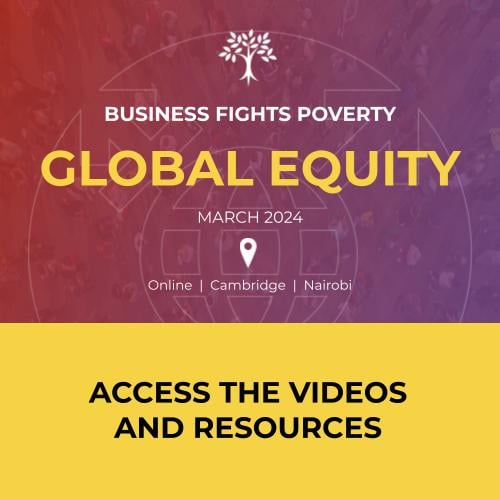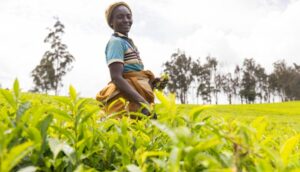Justine Greening’s speech at the London Stock Exchange on Monday highlights the growing emphasis on how business contributes to economic growth, and on how growth is the way out of absolute poverty. There are two interrelated objectives here: reduce poverty in developing countries through economic growth (i.e. by creating new jobs and raising incomes) and promote market development as a pathway to growth. Given the UK’s desire to improve its trade links by targeting emerging and pre-emerging markets and DFID’s desire to make it easier to do business in developing countries, is this a clear opportunity to promote stronger partnerships and collaborations between British enterprises and innovative enterprises in developing countries?
Are business partnership programmes a good thing?
Business partnership programmes (BPPs) link businesses in developing countries – those that have the potential to grow (mainly SMEs), but are constrained by limited access to finance, limited market access or insufficient technical know-how – with businesses in developed countries. From the perspective of the developing country, they can bring in new technologies, and help provide new goods, services and jobs whilstlinking development and commercial objectives. For developed countries, benefits include promoting country exports, accessing new clients and creating stronger trade links with emerging markets. Some good examples include DANIDA’s ‘Vanilla Trade with Responsibility’ programme which links farmers with Danish importers (securing supplies), supporting 6,500 farmers in Uganda; or a GIZ programme that links German and Brazilian chemical manufacturers to produce bioplastics from sugar processing waste. These programmes have the potential to help create knowledge platforms that shed light onto these markets, provide information to potential UK investors and spur them to take their first steps in what would otherwise be considered as ‘risky’ investment environments, all of which can catalyse further investments. They can also be a good way to promote more rigorous environmental, social and governance standards: international labour regulations, fair wages, more energy- and resource-efficient production processes and more rigorous and efficient business-management systems. On the other hand, there is the risk of crowding out local companies or ‘resource grabbing’ by less ethically inclined enterprises. However, with good regulations, clear conditions on profit allocations, tax payments and employment distribution (in favour of the host country) and good donor screening processes, the opportunities and benefits of such partnerships have the potential to promote local company growth where it might have not otherwise have occurred.
Weighing the positives and negatives of BPPs is difficult
Weighing the positives and negatives of BPPs is difficult. Worldwide, only ten or so programmes link high-income country enterprises with developing country companies, of which only four – Finnpartnership, USAID’sGDA, NORAD’s Matchmaking Programme and the Dutch PSI Programme (which has now ceased to operate) – have been evaluated. The major issue applies to all private-sector development programmes: the fact that there is no clear counterfactual that can be assessed since there is no simple system to determine which positive effects can be attributed to BPPs and which would have occurred anyway. The varied nature of these projects means that it is difficult to assess such issues for individual companies, and close to impossible to measure or isolate macro- or national-level impacts satisfactorily. Even well-established development finance institutes such as the International Finance Corporation are having a hard time assessing indirect impacts, let alone outcomes – beyond job creation.
Triple wins for donors: enhanced growth, increased private investment and development
These programmes take on a lot of the risks that companies may otherwise not be prepared to face when investing in what are seen to be ‘new’ or ‘risky’ markets. BPPs tend to target national SMEs, which may not otherwise have the financial capacity to invest in emerging markets and usually provide up to 50% of funds for any investment project. Donors see triple wins: they are enhancing growth in developing countries, leveraging private-sector partners to invest in low-income countries and encouraging them to take social concerns into consideration as part of their operations. In a period where leveraging private funds is seen as a way to bolster aid budgets and as an alternative to public aid financing, such approaches are gaining traction.
Beyond tied aid
The UK’s DFID is currently not allowed to promote UK enterprises in countries where they work, but donors in Germany, Sweden and Norway have no such issues. Simply allowing donors to promote their national enterprises through these partnerships is essentially a form of ‘tied’ aid, promoting donor country goods, regardless of job creation, innovation and market-efficiency effects in the countries where they operate. However, Germany’s DeveloPPP or Sweden’s Public-Private Development Partnerships– as well as other Scandinavian programmes – must link developmental objectives together with commercial returns for partners in both their home country and in countries where they are operating. Conversely, the UK’s Business Innovation Facility’s remit is to promote inclusive business practices – but not offer commercial advantages for UK companies in developing countries. What this means is that German or Scandinavian companies have an additional incentive to take part in BPPs compared to British companies.
UK business partnership programmes must consider their positive contribution first
If the UK, through Justine Greening and DFID, wants to implement its own BPP, then it faces the challenge of making sure that any such programme does not slip into the tied-aid mould. BPPs are not a form of aid, and it is essential that this is clear; furthermore participating businesses need to commit to a sustainable growth plan after donor participation has ceased. This means more involvement from the Department for Business Innovation and Skills as well as the Foreign and Commonwealth Office, who could work together with DFID to identify high-impact sectors in developing countries (potentially using the CDC Group’s employment-related impact grid as a starting point), and to link up UK and emerging market businesses that could work together.
Considering where UK enterprises would be a positive contribution to emerging markets (rather than a new set of competitors) will be the critical difference between a simple export strategy or a growth programme that can really represent and promote DFID’s new drive towards economic development.
This post features the author’s personal view and does not represent the view of ODI.
This blog was previously published on the ODI blog and is reproduced with permission.











2 Responses
In support of the UK Government promoting UK businesses in Developing countries. BPPs will work well in Developing countries once there is involvement within the communities. Many people in Africa are focusing towards entrepreneurship as it will act as a bridge towards closing the income gaps following the World Economic Forum findings by Oxfam. The World’s rich cover a significant portion of the wealth which gap must be reduced.
UK Govt promotion will enable the developing countries focus on economic driven activities to boost their communities. This will further boost growth in the chosen/ identified sectors thus improving the economy in relation to jobs, income generation and profit generation. Whereas there will be a triple win for the donors, the BPPs will positively benefit more.
I believe that it would be “a good thing” if BPPs partnered with companies within the Shared Value model. This would take it out of the “aid mode” and instead become a social investment. Business entities that are now into creating shared value (CSV) have identified opportunities for collaboration within their value chains. To be partnered into a company’s value chain gives an assurance of sustainability and continuity. The bonus here is if the CSV model is also spawns new value chains.